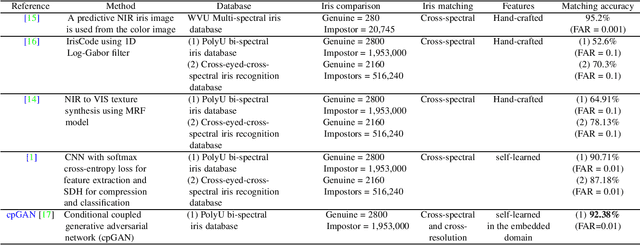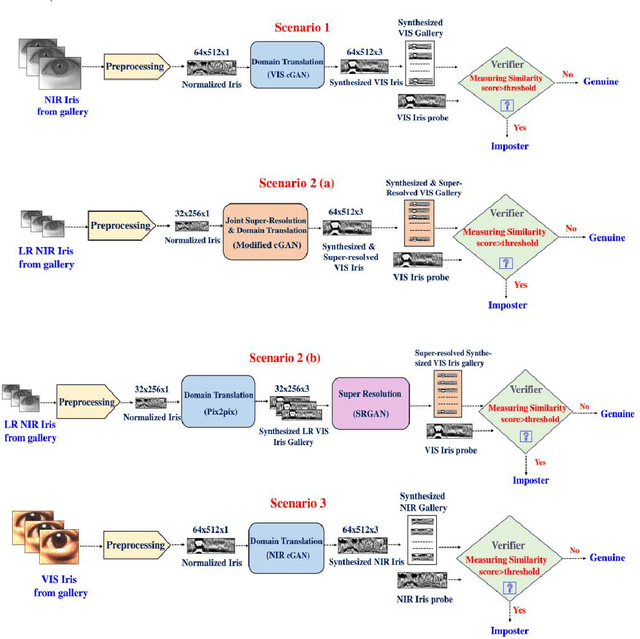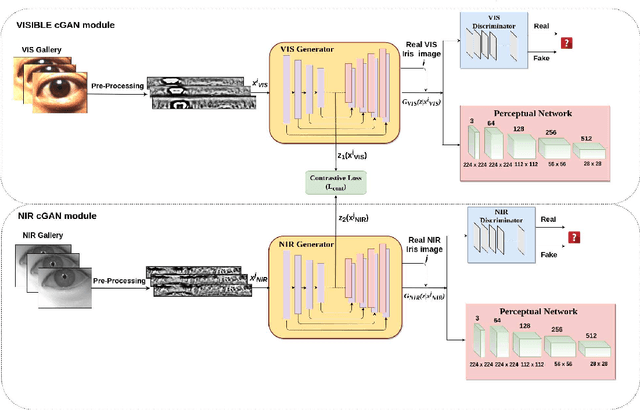Deep GAN-Based Cross-Spectral Cross-Resolution Iris Recognition
Paper and Code
Aug 03, 2021



In recent years, cross-spectral iris recognition has emerged as a promising biometric approach to establish the identity of individuals. However, matching iris images acquired at different spectral bands (i.e., matching a visible (VIS) iris probe to a gallery of near-infrared (NIR) iris images or vice versa) shows a significant performance degradation when compared to intraband NIR matching. Hence, in this paper, we have investigated a range of deep convolutional generative adversarial network (DCGAN) architectures to further improve the accuracy of cross-spectral iris recognition methods. Moreover, unlike the existing works in the literature, we introduce a resolution difference into the classical cross-spectral matching problem domain. We have developed two different techniques using the conditional generative adversarial network (cGAN) as a backbone architecture for cross-spectral iris matching. In the first approach, we simultaneously address the cross-resolution and cross-spectral matching problem by training a cGAN that jointly translates cross-resolution as well as cross-spectral tasks to the same resolution and within the same spectrum. In the second approach, we design a coupled generative adversarial network (cpGAN) architecture consisting of a pair of cGAN modules that project the VIS and NIR iris images into a low-dimensional embedding domain to ensure maximum pairwise similarity between the feature vectors from the two iris modalities of the same subject.
 Add to Chrome
Add to Chrome Add to Firefox
Add to Firefox Add to Edge
Add to Edge